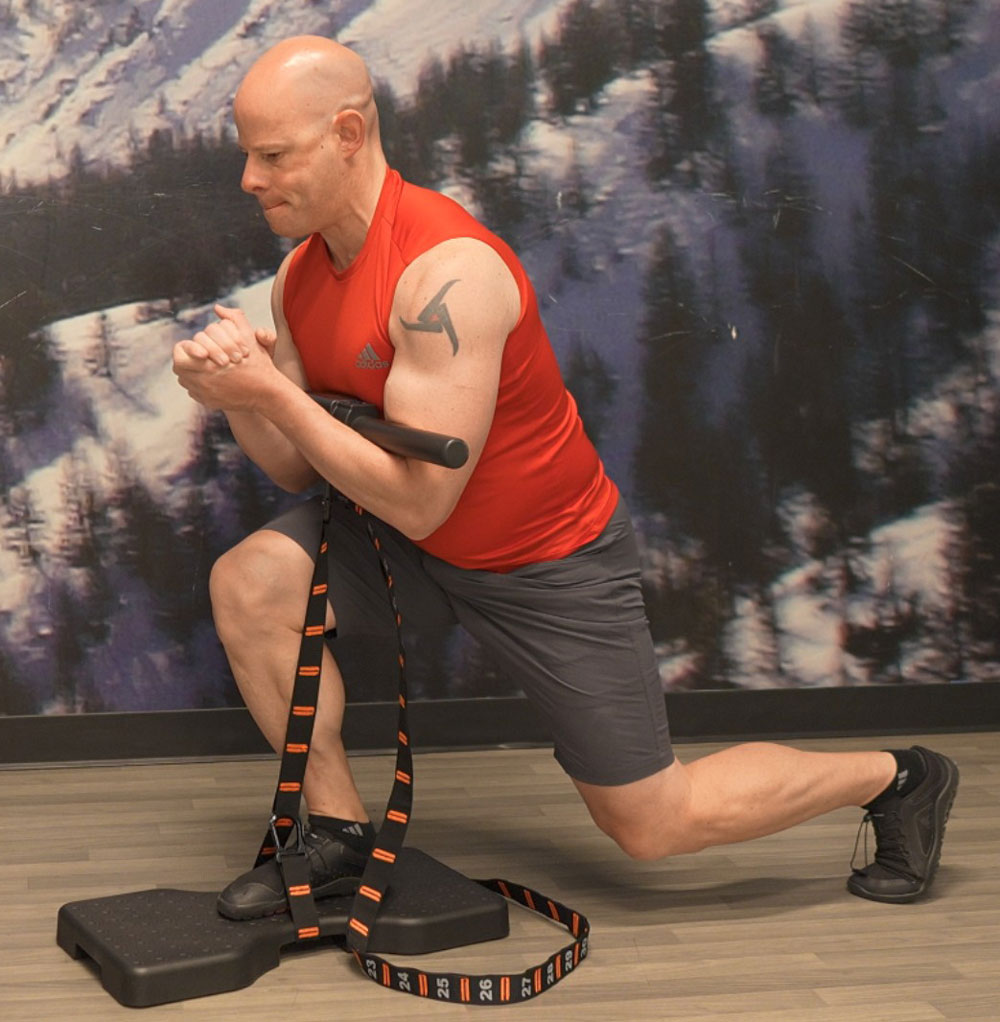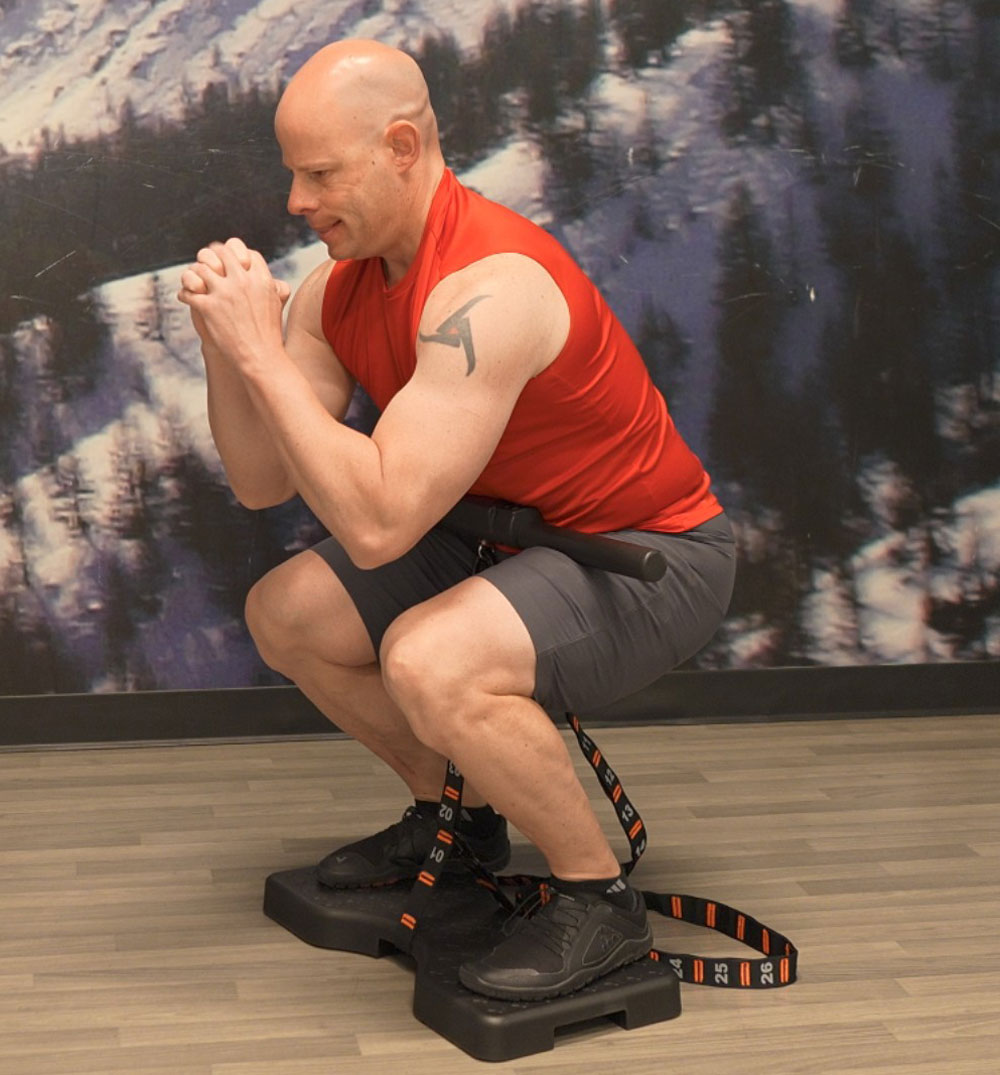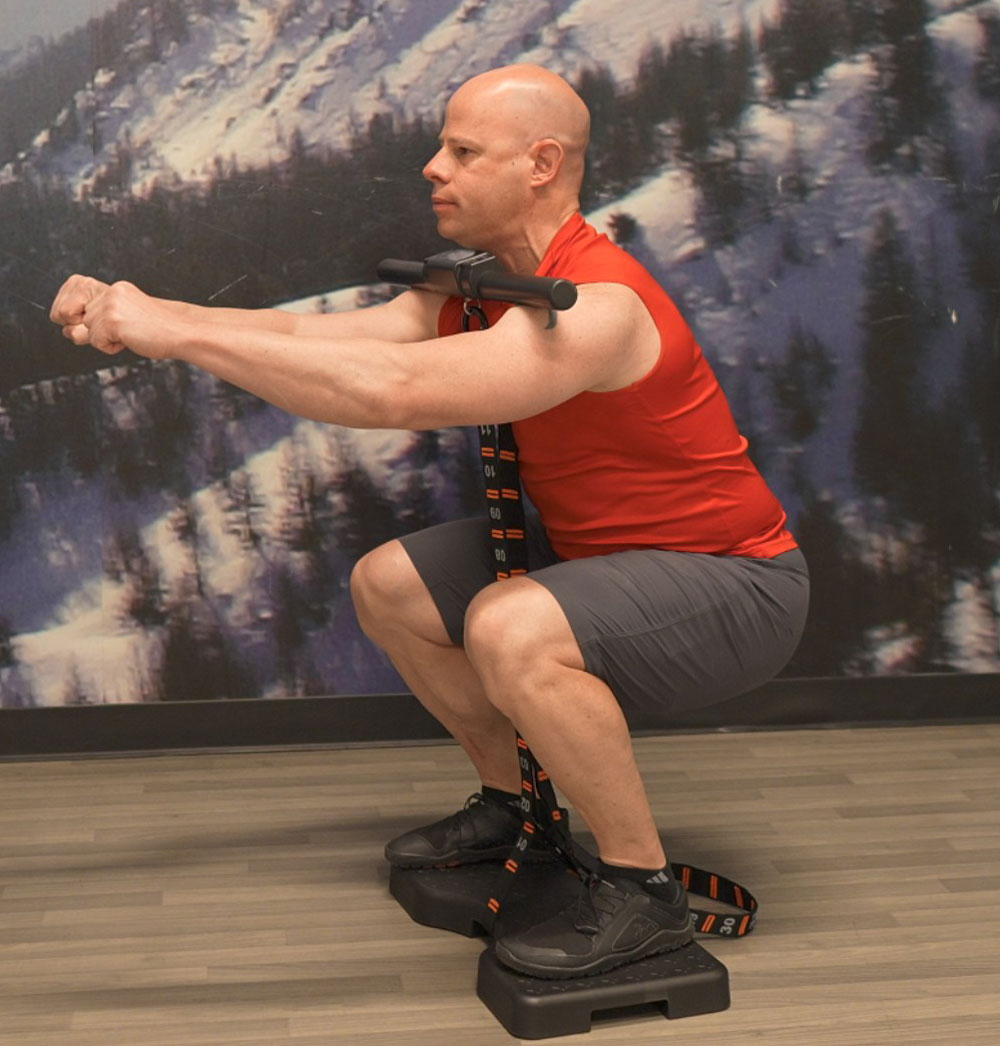How to Dramatically and Safely Level Up Your Leg Strength With These IsoMax Isometric Drills
By Matt Schifferle
"So, let me get this straight. I just place the bar on my lap and try to stand up against it right?"
"Yep that’s about it."
"Well, okay, but I don’t see how just that’s going to really work my legs all that …haaaaaAAAAAAAHHHHHH!"
As a professional fitness coach, I try not to laugh when my clients struggle with a new exercise. Yet, I couldn’t help myself as one of my long-time clients started screaming bloody murder in the middle of the gym the first time she experienced isometric leg training.
She only lasted a few moments before she collapsed on the floor while massaging her aching quads.
"What the heck was that?! Why do my legs feel like they are going to explode?!"
Composing myself I helped her over to a weight bench and gave it to her straight.
"You’ve never worked your legs that hard before."
And that my friend is one of the biggest advantages of using isometrics to level up your leg strength. Few methods can potentially work your lower body to the degree of isometric squatting. Isometric squat variations overcome several of the largest obstacles that prevent you from working your muscles to such a high intensity.
The first obstacle is the ability to apply sufficient resistance to the lower body. The muscles in the legs are incredibly strong and powerful. This inherent strength has long served humans for the evolutionary ability to run, jump, kick, and even sit with great efficiency. Unfortunately, this mechanical strength means that you need a significant amount of resistance to sufficiently train your lower body.
Most of the time, the answer for achieving such resistance is to use large amounts of weight against the body. Whether it’s loading up a bar in the squat rack, or selecting a massive stack on a leg press weight machine; even amateur lifters require a substantial amount of weight to challenge the lower body.
Lifting all of that weight can come with some significant drawbacks. The most obvious is the total amount of stressful force placed against the body. Even sitting on a comfortable leg press brings a lot of load into the joints, tissues, and nervous system. It’s no wonder that repeated exposure to these loads can increase the risk of injury, much less eventually wear and tear for many lifters.
And that’s assuming the athlete has sufficient stability and mobility, much less coordination, to handle those loads in a safe way. After all, heavy loads require more than just strong muscles. They also require a substantial amount of hip and core stability not to mention the coordination to radiate muscle tension throughout the body.
Unfortunately, many people lack these finer qualities which either greatly limit the potential to apply sufficient resistance to the leg muscles. Trying to forcefully apply more resistance on the muscles, by increasing external loads, can also increase the chances of something going pop, snap, or zing!
Put these two factors together and it’s no wonder most people struggle to sufficiently build up their lower body. Lack of tension control, and coordination also can make leg training supremely uncomfortable. This discomfort can inhibit the motivation to train the legs which only makes effective lower body training that much harder to come by.
All of these challenges naturally result in a lot of compensatory leg training. In almost every gym, you’ll witness people half-squatting, or even quarter squatting to compensate for a lack of tension, control, and mobility. You also sometimes see people with wobbly knees, shifting hips, or even outright, bowing forward to compensate for a lack of stability and control.

Such compensation patterns can help you work around the inherent weaknesses that hold you back, but they can only help you so far. Eventually, they will lead to chronic aches and pains not to mention frustration from endless plateaus.
Supplementing your leg workouts with just one or two isometric exercises will help you overcome all of these challenges and push your legs to a much higher level. Not just another level of strength, but stability and even mobility as well.
It’s hard to ignore the hip imbalances that compromise your knee alignment when you do asymmetric Zercher lunges. There’s nowhere to hide when you force yourself to apply maximum tension at the bottom of a thigh squat. Using a classic front squat, leaves little to the imagination when it comes to assessing how strong your lower body and core strength really is.
As I’ve addressed in my previous two articles, these exercises have a natural and automatic healing effect. Simply practicing them helps to alleviate many of the imbalances, misalignments, and physiological weaknesses that hold back your dynamic leg training.
You can replicate most any freeway exercise with an IsoMax, but here are several of my favorites for leveling up your leg training.
Zercher Lunges

The simple Zercher lunge does wonders for weeding out subtle imbalances that hide during bilateral leg training. It’s also a fantastic core exercise, and even a good assessment for back stability.
Polish Press

Few techniques are more simple and direct for applying resistance to your legs in a deep squat. Just don’t let your ego get in the way. This is a technique that requires surprisingly little resistance to make your legs burn with the fire of a thousand suns!
Front Squat

The front squat is an IsoMax isometric staple for good reason. It’s one of the best exercises to develop leg strength that irradiates through your entire core and upper body. If there’s a weakness anywhere, this exercise will seek it out, and hunt it down like a skilled predator.
All three of these exercises can be sufficient on their own as a workout. I recommend two hard short holds for six seconds for strength, followed by two longer holds for 15 to 20 seconds to burn out the muscle and stimulate hypertrophy.
These are also very effective for a warm-up before heavy back squats or sled pushes. Holding one of these exercises for 10 seconds for 3 sets, with a modest amount of effort, will do wonders to prepare your neuromuscular system for the workout to come.
Leg training is kind of like duct tape, it has a light side and a dark side to it. On one hand, a few things are more satisfying and rewarding, like effective lower body workouts that build strong and resilient legs. On the other hand, it can be fraught with aches, pains and frustration.
Isometric training can help ensure you stay on the light side with its many rewards for years to come. Better still, It can help you work your legs extremely hard even with less than perfect joints from years of hard training. You don’t have to give up on having strong legs just because the squat rack is no longer friendly to your knees.
Isometrics makes the higher levels of intensity, much more accessible to anyone, and therefore the rewards and benefits are much closer than you think.
Just be ready the first time you give IsoMax isometric leg training a try. I promise to be (kind of) empathetic to your searing quads.
Matt Schifferle (shif-er-lee) is on a mission to help people break free of the fitness rat race and make the whole world stronger through calisthenics and Isometrics training. A fitness coach for over two decades, he created his Red Delta Project to empower people with more freedom and control over their healthy lifestyle.
Matt works with a wide variety of clients in Denver Colorado where he’s constantly testing his Fundamental Approach to Fitness on the mountain bike trail and local brew pubs.
Website: https://www.reddeltaproject.com
YouTube: https://www.youtube.com/user/RedDeltaproject
Instagram: https://www.instagram.com/red.delta.project/
Podcast on Spotify: https://tinyurl.com/2ofedjsh
Back